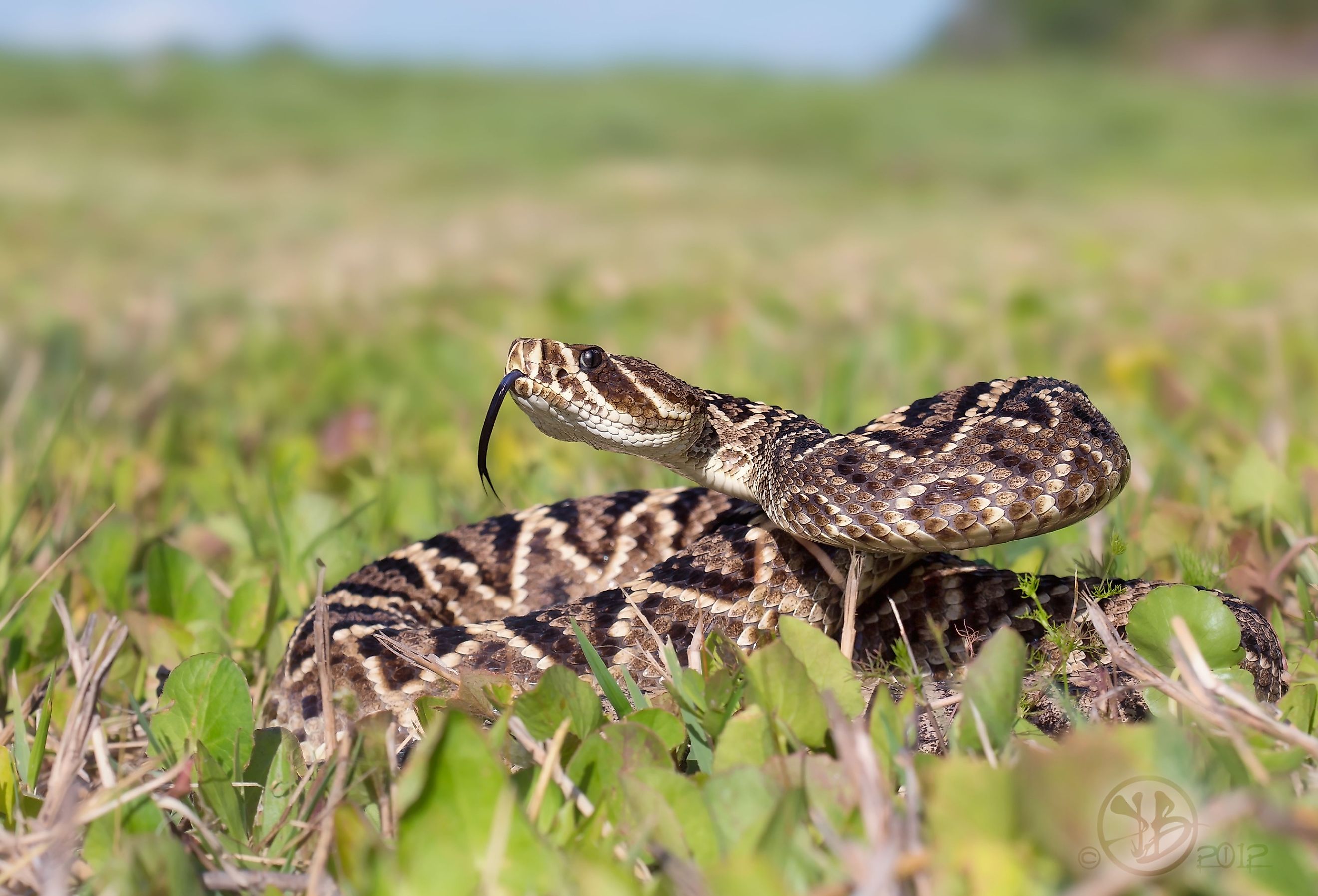
Which State Has More Venomous Snakes: Texas or Louisiana?
Both the states of Texas and Louisiana are located on the Gulf Coast, known for their warm climate, making the area a fantastic breeding ground for dozens of snake species. These snakes are known to frequent swamps, grasslands, wooded areas, and rock formations, with some being more secluded and less likely to attack and others being ready to stand their ground. While not all of these snakes are venomous, a fair share of them pose a threat, with the question being, which state has more of these dangerous creatures?
Snakes in Lousiana
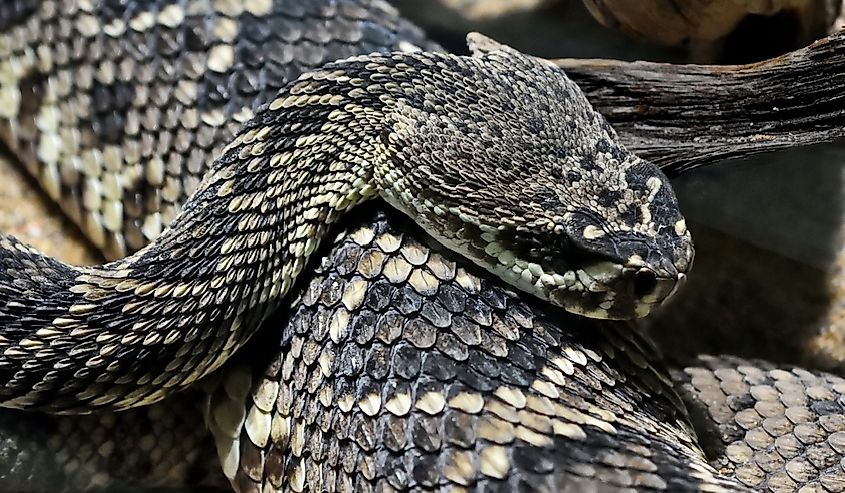
Lousiana is home to 48 snake species, though that number can vary depending on the source, with some suggesting there are over 50 species. Non-venomous snakes include scarlet snakes, rough green snakes, speckled kingsnakes, and western milksnakes. These creatures come in all colors and sizes, from light greens, striped, spotted, and dark to black. They can be thicker and stout or long and skinny. They also each prefer certain climates, hiding areas, and geological features.
There are seven venomous snakes in Louisiana. They can sometimes be confused with non-venomous snakes, so knowing what to look out for is important to avoid or treat a potential bite.
Snakes in Texas
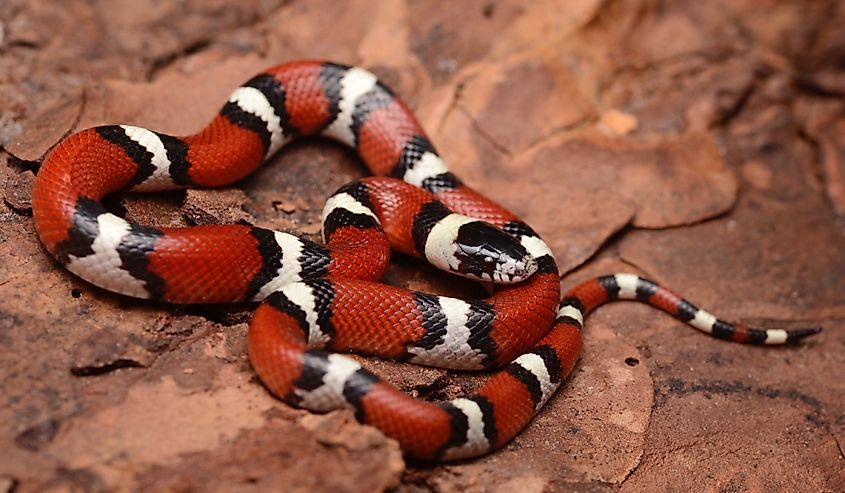
Texas is home to 105 snake species, more than double that of Louisiana. These snakes range from tiny ones that hide in thick grasses to large, intimidating beasts that no one wants to run into accidentally!
Non-venomous snakes in Texas include Texas rat snakes, western coachwhips, garter snakes, and Texas indigo snakes. These creatures can be found in various spots, from near the water to open areas, urban landscapes, and tall grass. Although these snakes might bite, they usually won't cause too bad a reaction.
15 snakes in Texas are considered venomous, ranging from rattlesnakes to copperheads, cottonmouths, and coral snakes.
Venomous Snakes in Both Texas and Lousiana
Pit Vipers
Pit vipers include rattlesnakes, copperheads, and cottonmouths, all of which can be found in Louisiana and Texas.
1. Rattlesnakes
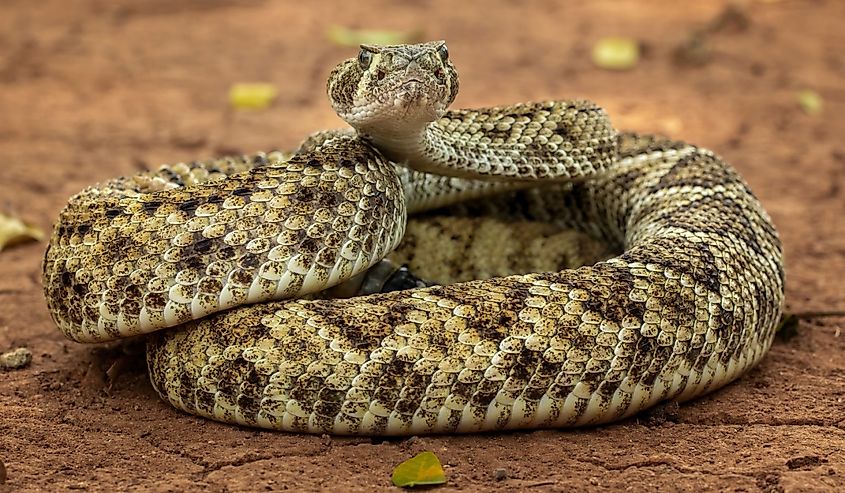
There are three species of rattlesnake in Lousiana.
Eastern diamondbacks are the largest venomous snake in North America. These snakes are known for their dark brown to black diamond patterns and can grow to 3-6 feet, some being 7 feet long. They can be found in dry areas like dunes, sandhills, and prairies. Timber rattlesnakes are light tan to dark brown and can be identified by the blackish 'V' pattern pointing towards their tail. They often frequent woodlands and rugged terrain, such as rocky cliffs. Pygmy rattlesnakes can be silver to grey, with dark brown or black spots and sometimes faint orange stripes. They reach a maximum length of 25 inches and prefer to live in denser areas with plenty of ground cover for hiding.
Texas is home to plenty of rattlesnake species. There are two types of massasauga species: western massasaugas, which are light gray with brown blotches, and desert massasaugas, which are lighter in color. These rattlers love grasslands, marshes, and swamps.
There are six more rattlesnake species in the state. The Western Diamondback is known for its brown diamond pattern. Timber rattlesnakes have broad, dark crossbands and frequent wooded and wet areas. Mottled rock rattlesnakes have mottled areas between their crossbands and are found in mountainous regions. Banded rock rattlesnakes are found only in the western tip of Texas, as are Mojave rattlesnakes. Mojave rattlesnakes are also similar to Western Diamondbacks. Prairie rattlesnakes are green or grey with round blotches and prefer to hide in grassy areas.
2. Copperheads

Copperheads like to call both Texas and Louisiana home. These snakes love rocky and wooded areas. They are known for their varying shades of red and brown crossbands and also vary in size, though they average between 20 and 30 inches. The different types of copperheads in Texas are southern copperheads, broadband copperheads, and trans-pecos copperheads. In Louisiana, there are Eastern copperheads.
3. Cottonmouths
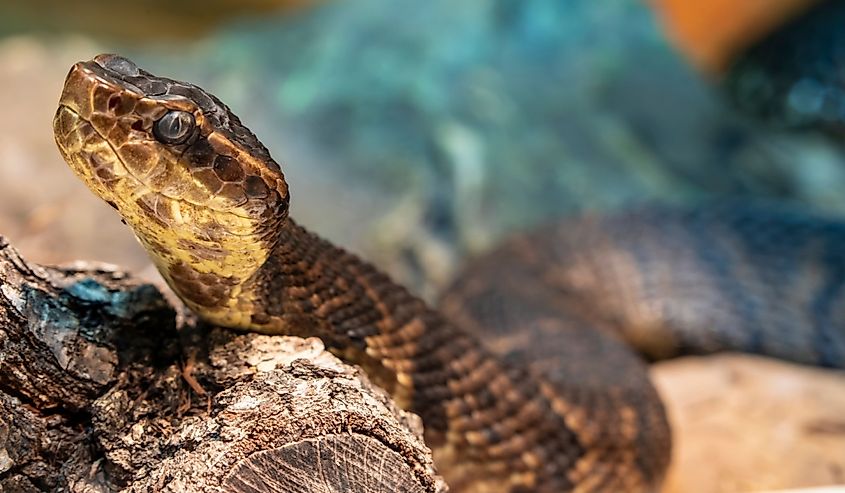
The Northern cottonmouth, also called a water mocassin, has large, triangular heads and olive-green to darker-colored bodies. They love to be near water, whether in swamps, bayous, rivers, or lakes. They can sometimes be found basking or hunting in the water. They get their names from the white tissue displayed in their mouths when showing their fangs, which resemble cotton in their mouth!
Cobras
Not all snakes in Louisiana and Texas are considered pit vipers. Some are considered cobras, including the coral snake. When people think of cobras, they often imagine king cobras, cape cobras, and Indian cobras, but coral snakes are considered part of the cobra family, falling under the Elapidae category.
Coral Snakes
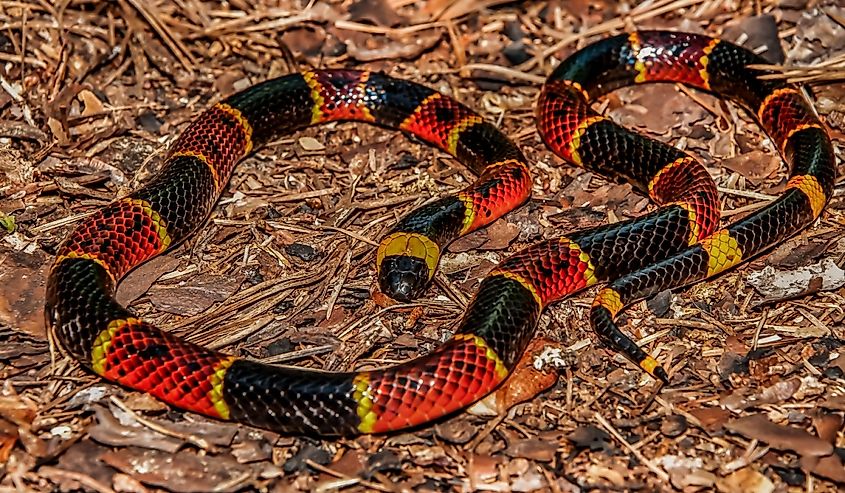
There are two species of coral snakes in Louisiana, and they can often be confused as harmless snakes, which makes them even more dangerous. The Texas coral snake is known for its thick black band, skinny yellow band, and thick red band pattern. The Harlequin coral snake, also known as the Eastern coral snake, is sometimes slightly darker in color yet maintains the same pattern.
In Texas, they only have the Texas coral snake.
First Aid
It's important to know what to do if a venomous snake bites you. Immediately after being bit, contact 911 or a poison control center and seek a medical facility. Do not try to suck out the venom yourself or restrict blood flow if you can; try to take a picture of the snake or write down its attributes for later identification. Symptoms of a venomous snake bite include swelling, dizziness, nausea, extreme pain, muscle aches, changes in breathing and heart rate patterns, and bleeding. More serious complications can include amputation, severe infection, cardiac arrest, and the inability to breathe. The best cure for a snake bite is anti-venom administered by a medical professional.
To minimize your chances of encountering a snake, avoid areas they might see as hiding spots, such as forest debris, junk piles, and narrow passages. Keep your yard maintained, and watch children and pets closely while hiking and playing outside.
Conclusion
It may be surprising to know which state has more venomous snakes. Texas outnumbers Louisiana in terms of problematic snakes, with Texas having 15 and Louisiana only having seven. But when their general snake population is compared, with Texas having 105 and Louisiana only having 48, there's a reason your chances of running into one of these stealthy creatures is higher in Texas. But no matter which state you visit or live in, it's important to familiarize yourself with these unique animals and be prepared just in case!











